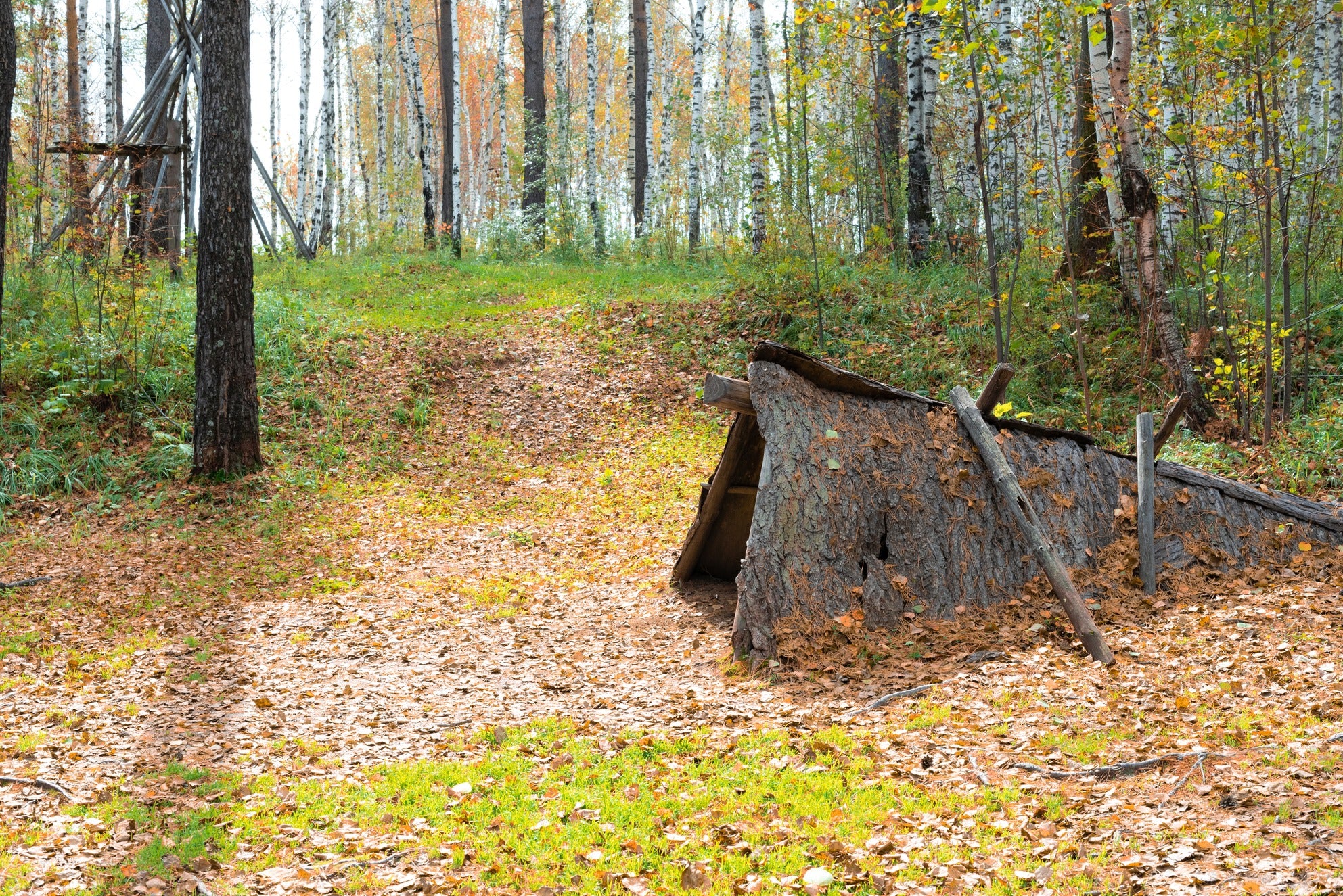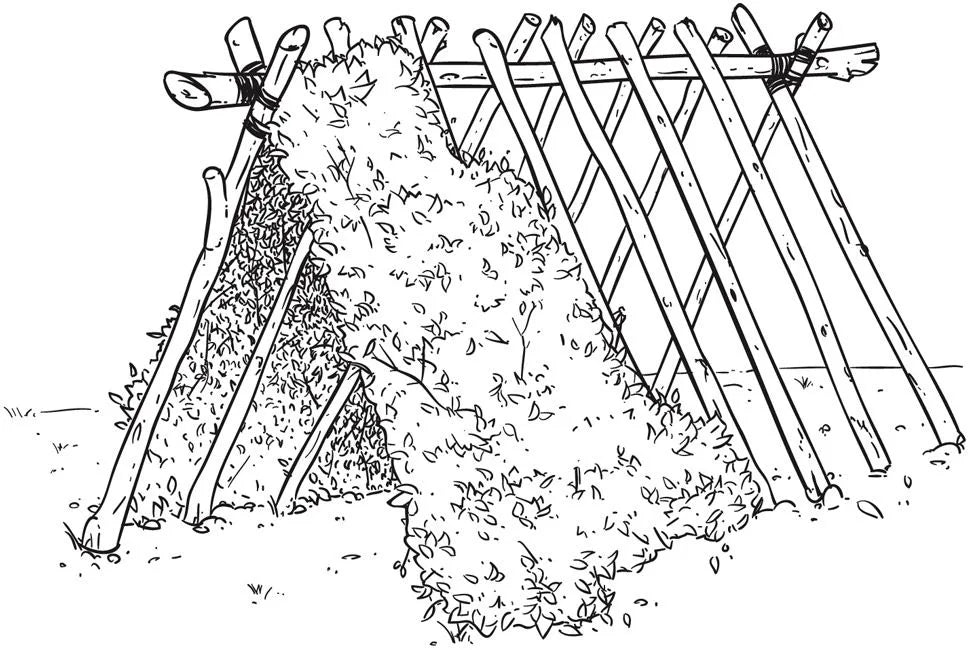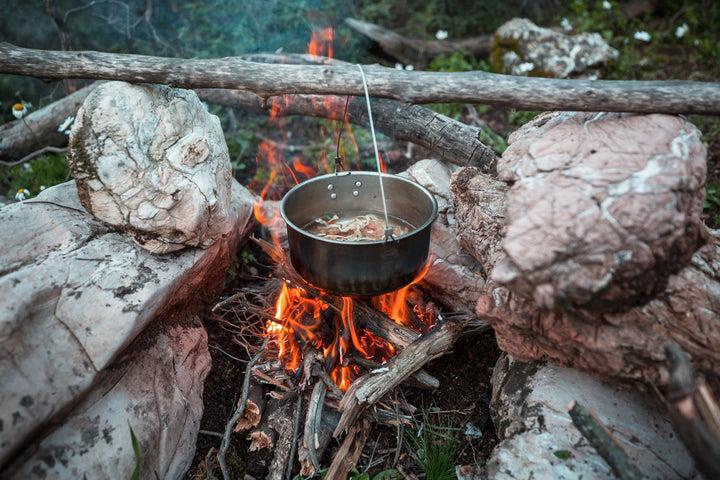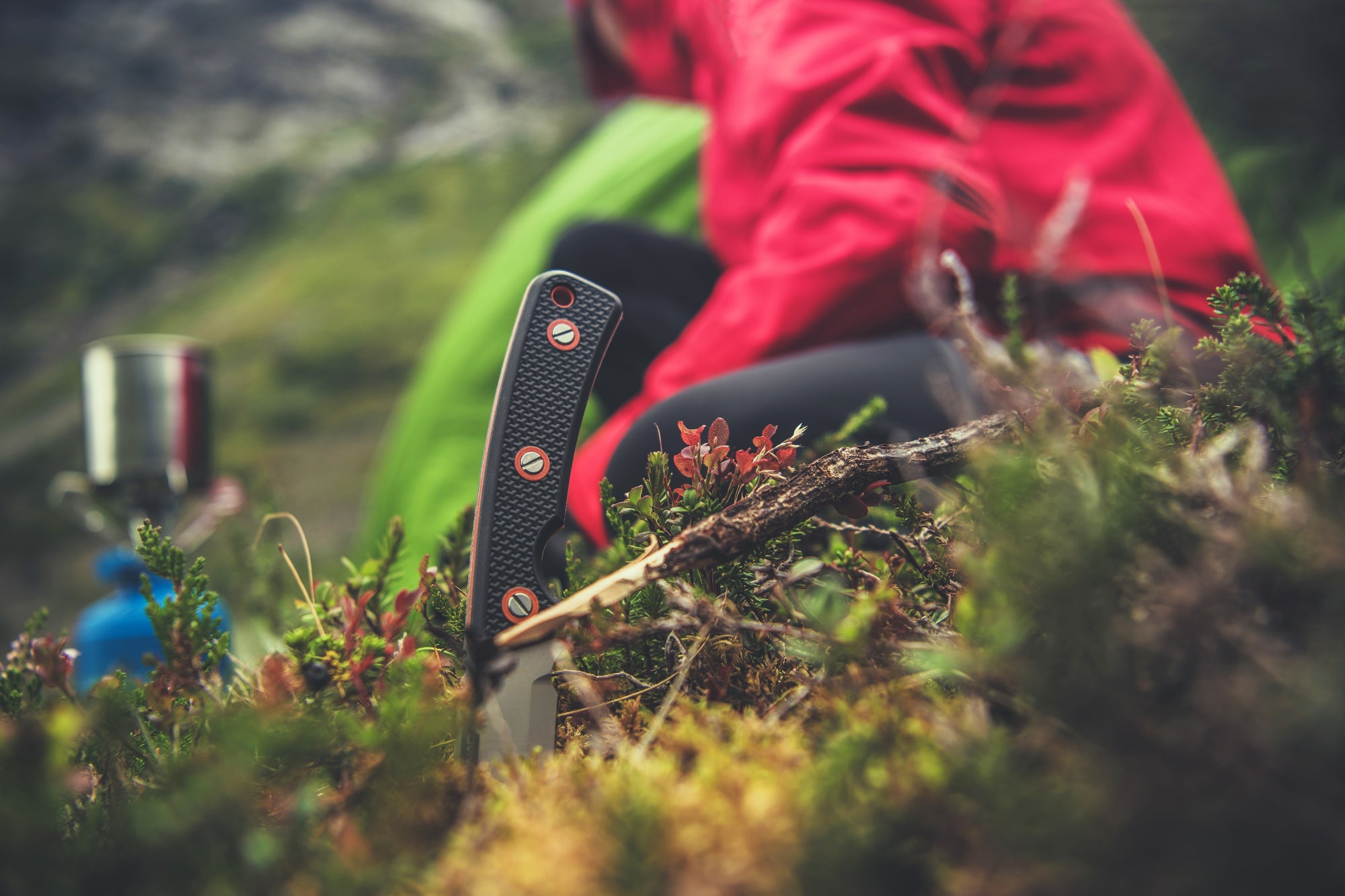Having the confidence and knowledge to survive in any type of wilderness environment is crucial for those who must escape a dangerous zone after a major disaster.
Even though your environment can vastly differ in terrain, threats, and available resources, the same basic skills apply to any wilderness survival plan. Whether you are in a tundra or tropical forest, knowing how to keep yourself and others sheltered, hydrated, and fed is vital for long-term survival.
Luckily for us, such information has been tried and tested over generations and has been condensed into an easy-to-learn and absorb format.
Today, we will dive into the best wilderness survival tips and give you a list of the most value-packed survival books to date.
Let’s get started…
Table of Contents
-
01
Shelter Building
-
02
Water Procurement
-
03
Food Sourcing
-
04
Fire Starting
-
05
Psychological Resilience in Survival Situations
-
06
Do I Need a Gas Mask for My Wilderness Survival Kit?
-
07
Wilderness Survival Pitfalls to Avoid During a SHTF Situation
-
08
Frequently Asked Questions
Shelter Building

You can find many great videos online showcasing how you can build various shelter types, but before we dive into the how-to, we must first understand why a shelter is the first topic on our list. A good shelter protects you from the elements, gives you safety and concealment, and prevents many major health issues.
Staying safe from hypothermia or freezing is just the start. For long-term survival, you also need peace of mind and resilience. None of this can be achieved without having a dry place to sleep and rest. No matter how great your bug-out bag is, the first thing to do in the wild is find a safe spot to set up camp and stay the night.
For instance, "Bushcraft 101: A Field Guide to the Art of Wilderness Survival" by Dave Canterbury highlights the need to know how to craft shelters using natural materials — emphasizing simplicity and functionality.

Different types of wood and vegetation might be available based on your location, and the requirements to make a shelter vary drastically. Knowing your surrounding environment and what resources are available, as well as having the tools to harvest them, is key.

The basic concept is simple: Create a robust outer layer that provides the primary structure and insulate it via available vegetation and materials.
The goal here is to establish a boundary where heat won't escape from your sleeping bag, and water won't pour on you.
If you went one step beyond with your bug-out bag, you may have a handy waterproof poncho that you can quickly suspend via paracord in a V shape to hang a hammock off the ground.
Once you have a safe place that is hard to spot, your body is probably dehydrated from all the sweat and energy you just expended, and your main focus should be on finding a much-needed water source to sustain your outdoor endeavor.
Note: When building your shelter, consider where you will place your campfire so that its heat can get trapped and absorbed better when you sleep.
Water Procurement

Water procurement is arguably the most crucial aspect of wilderness survival, as we keep in mind the rule of three — we can survive three minutes without air, three days without water, and 30 days without food.
In any survival situation, one of the top priorities should be to find a reliable and safe water source. This is easier said than done, as it's one thing to read about in a blog or survival book and another to know how to perform under duress with limited resources.
Books like "Water: The Ultimate Guide to Survival" by Claude Davis offer valuable insights into various water procurement methods and purification techniques. One key takeaway that Davis emphasizes is the importance of being proactive in securing a clean water source.
Based on your region, the difficulty of sourcing water can be tipped in your favor. For example, for people in snowy environments such as the northern parts of Canada, procuring fresh water could be as simple as melting snow (just remember the story about yellow snow).
The next most common method that is relatively location-independent (except for desert terrain) is to collect rainwater. If you are fortunate enough to get rain, you should immediately utilize makeshift containers, tarps, or ponchos to collect rainwater for drinking.
Other sources of water in a survival situation include ponds, rivers, and lakes (just avoid water with high salt content).
Making Water Safe for Drinking
Getting water is one thing, but as we mentioned earlier, there is a crucial part of the process of water procurement called purification — in other words, making it safe to drink.
Even if you are in the biggest hurry, you should NEVER drink unfiltered water from the wild, as the last thing you want is to catch a nasty infection that will drastically reduce your survival odds.
Here are some actionable tips on how to make water safe for drinking based on the best survival books out there:
- Boiling: By bringing water to a rolling boil for at least one minute, you can kill most pathogens, including bacteria, viruses, and parasites.
- Water Filtration: Portable water filters, or filtration straws, are designed to remove impurities and pathogens from water by passing it through a physical barrier or chemical filtration medium.
- Chemical Treatment: Water purification tablets or drops containing chlorine dioxide or iodine can effectively disinfect water.
- UV Purification: Ultraviolet (UV) purification devices utilize UV light to deactivate microorganisms present in water.
- Solar Disinfection: As a last-ditch effort, leaving your water exposed to the sun for several hours in a clear container can help disinfect it.
Note: It's best to have a pre-built system in your bug-out bag specifically for water purification and procurement. Be sure to integrate purification tablets, a water filter, and a kettle where you can boil water to create the most rigorous system.
Once you have a safe place that is hard to spot and a clean water source, you can focus on getting the calories to sustain your outdoor endeavor.
Food Sourcing

Ideally, you should have some delicious MREs inside your bug-out bag so you don't have to spend valuable time and energy finding food in the first few days of a SHTF or survival situation.
If you have been forced to relocate or bug out, more sustainable sources of sustenance are needed for you to make it.
The more energy you expend, the more sustenance from food you will require. When it comes to procuring food in a survival situation, there is a nearly limitless supply ready for you if you have the needed skill set.
Let's expand on the main ways to secure food in a drawn-out or brief survival situation:
- Foraging
- Hunting
- Fishing
- Trapping
- Scavenging
Let's start with active hunting or trapping: In most regions of the world, you should have access to different types of game and wildlife. Before you go out and grab a10/22 rifle, be sure it's adequate for your needs (and also ethical).
Important Tips on Hunting in Survival Situations

If you live in an area where you can't own firearms, having a high-powered air gun or bow can let you hunt small and medium-sized game, like squirrels and even hogs. As there is too much on this subject to cover in a few paragraphs, we will leave you with our recommended survival book on this topic.
The book "The Complete Guide to Hunting, Butchering, and Cooking Wild Game" by Steven Rinella should be your first stop on hunting. There, you will learn about a wide range of topics essential for survival hunting, including firearm selection, tracking techniques, field dressing, and cooking wild game.
Some key takeaways from Rinella's book include:
- Spend time at a shooting range to familiarize yourself with your chosen firearm or bow!
- Carry and know how to sharpen a good field dressing knife and practice using it so you’ll be ready in case you need to use it in a survival dressing situation.
- Keep food or dressing AWAY from your base camp, as this can attract other predators like bears or wolves.
Tip: In situations where noise may attract unwanted attention or ammunition is limited, bowhunting with a compound bow or recurve bow offers a quieter and more sustainable approach.
Edible Plants

Identifying and harvesting edible wild plants is a vital skill that can sustain life and provide nourishment in times of need. “Edible Wild Plants” by Lee Allen Peterson is a book I wish my grandfather had read when he took me out to forage for wild mushrooms when I was little (I ended up with IV drips later).
In the heat of the moment, it's easy to pick those delicious-looking berries, only to find out you now have issues with poisoning.
This book dives into the best practices of identifying edible vs. non-edible plants, with graphic illustrations and other markers to look out for, such as distinctive leaf patterns, colors, and growth habits.
Understanding these markers can help you prevent potentially dangerous encounters with toxic plants and ensure a safe foraging experience. Moreover, learning about seasonal availability and optimal harvesting techniques can maximize your chances of finding edible plants in the wild.
Note: Be aware of poisonous plant doppelgängers, especially if you forage mushrooms.
Fishing
Give a man a fish, and he will eat for a day; teach him to fish, and he will eat for a lifetime.
Fishing can net you a steady stream of high-quality nutrients and is one of the best ways of sustainable wilderness survival. Regardless of the season or climate, you should always have an opportunity to catch something in any lake or river (assuming life still exists).
The biggest upside of fishing is in the versatility of fishing methods. There are so many ways to catch fish, which should allow you to adapt well to any environment and conditions.
Here are the most common methods of wilderness survival fishing we took from the best survival books:
- Hand Fishing: A primitive method where fish are caught without any tools, often in shallow water or under submerged logs and rocks.
- Gill Net Fishing: Involves setting up a net in the water with openings designed to entangle fish by their gills as they swim through.
- Dip Net Fishing: Utilizes a simple net with a handle to scoop up fish from the water — effective for catching fish near the surface or in shallow waters.
- Spear Fishing: Uses a sharp-tipped spear to impale fish swimming nearby, requiring precision and knowledge of fish behavior.
- Handline Fishing: This basic fishing method involves a handheld line with a hook and bait, cast and retrieved manually, which is ideal for various aquatic environments.
Note: Be mindful of your shadow, movements, and any sound you make when fishing, and utilize natural bait.
Fire Starting

The cradle of civilization, a fire can be a tremendous morale booster, a way to dry off wet shoes and clothes, and keep you warm during the night and in harsh climates.
After you have caught yourself some game or fish and the night draws near, it's time to consider building a campfire. If you have prepared correctly, your bug-out bag should always include a lighter, a magnesium rod, and some high-end fire-starting materials.
What we see in survival shows and books is a person creating a bow from a stick and a rope and spinning a stick on a surface until the friction creates a fire. First of all, this is extremely difficult, and without practice, near impossible.
The last thing you want in a high-stakes survival situation is to waste precious time and energy carving a bow or looking for flint just because you didn't pack lighters.
With this in mind, here is the best way to build a fire based on Dave Canterbury’s book “Bushcraft 101”:

- Gather dry tinder and kindling materials such as leaves, grass, and small twigs before attempting to start a fire.
- Use a reliable fire starter tool, such as a ferrocerium rod or waterproof matches, to ignite your tinder.
- Arrange your fire lay in a teepee, log cabin, or lean-to structure to promote airflow and efficient burning.
- Take advantage of natural fire-starting materials like birch bark or fatwood found in the wilderness.
- Practice various fire-starting techniques, including friction-based methods like the bow drill, to ensure readiness in any situation.
- Pro tip: Put large stones around the fire and place them close to your bed when the fire goes out, as they will store the heat and radiate it out slowly.
Remember, when starting a fire, observe the proper safety procedures, pour water, and bury the ashes when you are done so the amber doesn't start a larger fire!
Note: If you are trying to lie low to avoid detection, there are ways to create a “stealth” fire, such as digging a hole in the ground and lighting it there.
Psychological Resilience in Survival Situations

In a vacuum, when thinking about a life-or-death survival situation where you only rely on yourself, it's easy to neglect the psychological factor. Sure, you can go out and build a shelter or even find food, but none of these will save you in the long run unless you have this one thing in check.
Survival situations can be demoralizing, but succumbing to despair clouds your judgment and cripples your ability to take action.
You must have the mindset of being willing to do anything to survive!
Psychological resilience is a cornerstone of survival, emphasized in both "Bushcraft 101" and the "SAS Survival Handbook." These books stress the importance of maintaining a positive mindset and adapting to challenging situations with resourcefulness and determination.
In wilderness settings, where adversity is inevitable, psychological resilience can mean the difference between succumbing to panic and emerging victorious.
Even small victories like finding clean water or starting a fire can boost your morale and fuel your will to survive. If you have a long stretch of not finding water sources or catching a fish, don't let it get you down; you might be just a few hours away from achieving your goals.

All of this is easier said than done, and you might wonder, “How can this be practical, actionable advice?”
- Well, go out and practice camping for one or two nights at first to get familiar with your gear and test out all the methods for procuring food and water.
- See what gear works for you and what doesn’t. Did your fire start, fail, or break? Does your survival knife get chips or break apart when you try to split wood with it?
- Having confidence in your skills and gear will give you a much greater mental edge when the going gets rough.
If you can't acquire these resources in a low-stakes environment, don't expect to magically be able to do them when you are in a life-or-death wilderness survival situation.
Note: Having small personal daily “rituals” or care routines, such as servicing your guns or self-care, can greatly boost your resilience (and lower your jam rates).
Do I Need a Gas Mask for My Wilderness Survival Kit?

While a gas mask might seem unnecessary for a wilderness survival kit, unexpected situations can arise. Forest fires, accidental industrial spills, or volcanic activity could release harmful gases.
Furthermore, there is something else to consider: How will you get from your urban area to the woods in a bug-out situation during societal collapse?
Sure, once in the wilderness itself, a gas mask might have limited use, but how will you navigate a potential SHTF situation resulting from civil unrest?
In case you need to get out of dodge quickly and safely, you might have to go past large protests where tear gas is employed or go through riots with looting and shooting.
Ultimately, every ounce you put in your bug-out bag matters, so the choice of whether to include a respirator is crucial.
Here's a breakdown to help you decide if it makes sense for your circumstances:
Pros:
- It offers some protection from smoke inhalation during wildfires.
- It filters harmful particles during dust storms or volcanic eruptions.
- It provides some defense against tear gas (useful for civil unrest situations in remote areas).
Cons:
- The incorrect respirator might be bulky and heavy to carry.
- It requires proper filters for specific threats (e.g., smoke vs. chemical).
- It has limited usability — most wilderness survival situations won't involve toxic gases.
- Maintenance: You need to store it properly and replace its filters periodically. The bottom line is that any serious prepper should have a gas mask and a couple of filters in their emergency preparedness kits. We can study multiple recent events such as wildfires, breakdowns of society, or riots where a gas mask would be invaluable.
What Should a Wilderness Bug-Out Gas Mask Kit Include?

If you need to get out of harm's way to your bug-out location in the wilderness, having a pre-built gas mask survival kit ensures you are prepared for any hazardous situation.
A comprehensive kit should include a modern gas mask designed to guard against a full spectrum of toxic industrial chemicals and chemical warfare agents, along with versatile filter options.
In the event of bugging out due to a nuclear reactor meltdown or WW3 escalation, having potassium iodide pills for nuclear emergencies is also a must.
With a leg-mounted gas mask pouch for quick deployment and storage instructions to ensure longevity, the EvakPak provides peace of mind in times of crisis.
Note: When it comes to preparedness, it's much better to have the option to deploy a respirator than find yourself without it at a time when you need it the most. In a drawn-out SHTF situation, it will always have a use, even if it's just to barter for food.
Wilderness Survival Pitfalls to Avoid During SHTF

One of the best ways to not survive is to prepare for every contingency but make a basic mistake.
It's more romantic to talk about gear and neat high-end knives or paracord bracelets, but it's very boring having to explain how to read a topographic map or use a compass.
The people who have survived throughout history have always been well-rounded, and the more skills you have, the greater your odds of wilderness survival.
With this in mind, here are some of the top overlooked factors to avoid during a SHTF wilderness bug-out situation:
- Panicking and Rushing Decisions: A crisis is not the time to be a headless chicken. Take a deep breath, assess the situation calmly, and prioritize your needs. Think about shelter, water, and security before worrying about anything else.
- Underestimating the Importance of Shelter: Exposure is a major threat in any environment. Seek shelter immediately, even if it's a makeshift lean-to. Building proper shelter will allow you to conserve energy and protect you from the elements.
- Dehydration: Dehydration sets in quickly and clouds judgment. Always prioritize finding clean water. Remember, you can survive longer without food than water. Look for natural sources like streams or collect rainwater.
- Ignoring Signaling Opportunities: If you're hoping for rescue, make yourself visible. Build signal fires (following safety guidelines), use a mirror to reflect sunlight, or try creating large SOS symbols on the ground.
- Exerting Yourself Unnecessarily: Survival situations require you to conserve energy. Avoid strenuous activity unless absolutely necessary. Focus on tasks that directly contribute to your survival, such as building shelter or finding water.
- Neglecting a First Aid Kit:

Underestimate surface cuts and bruises at your peril! Without antibiotics and proper wound care in a grid-down situation, even minor injuries can become infected and lead to serious complications.
